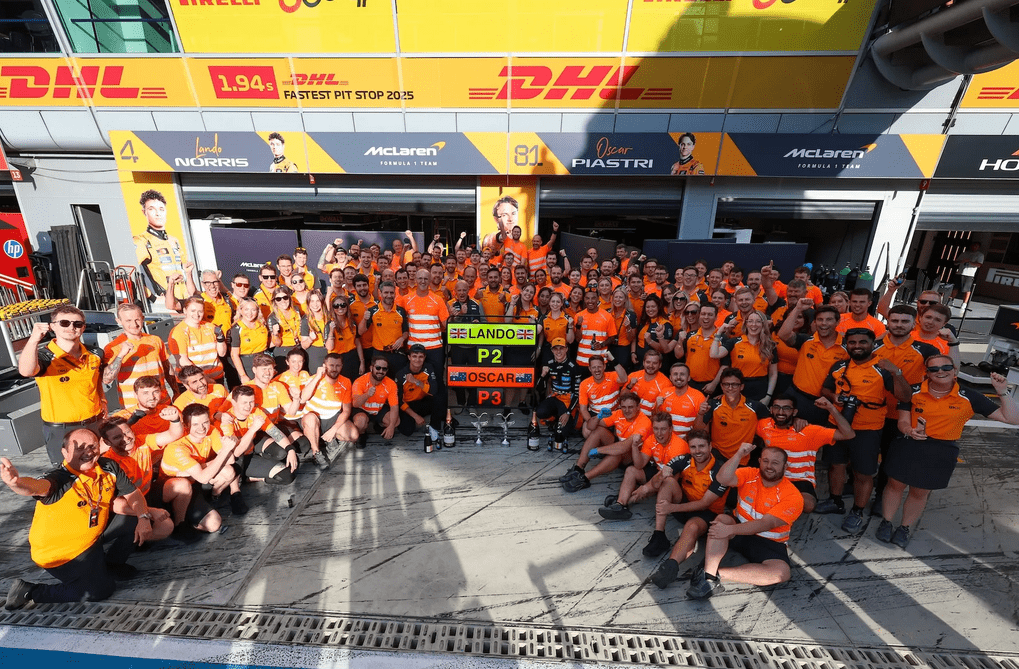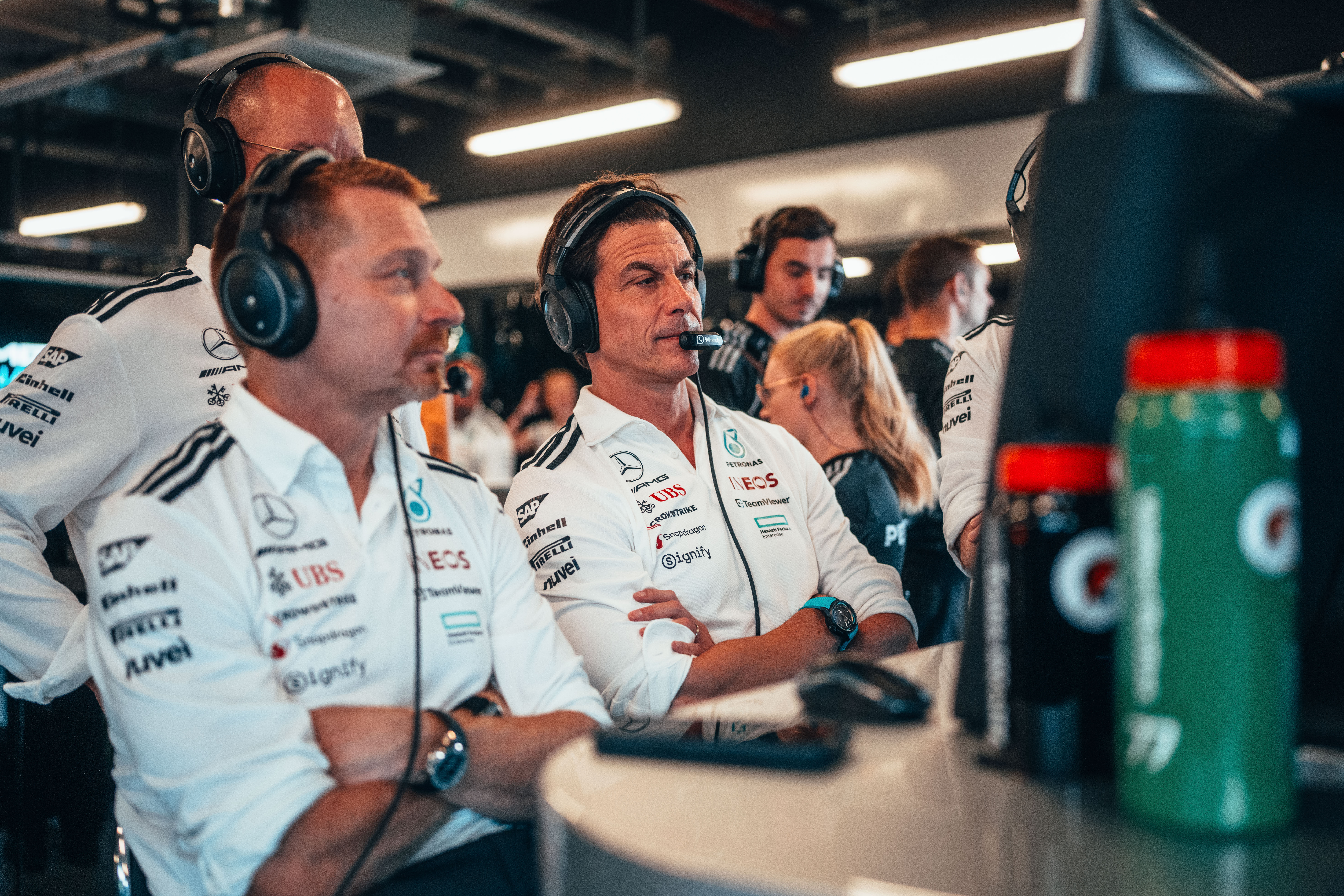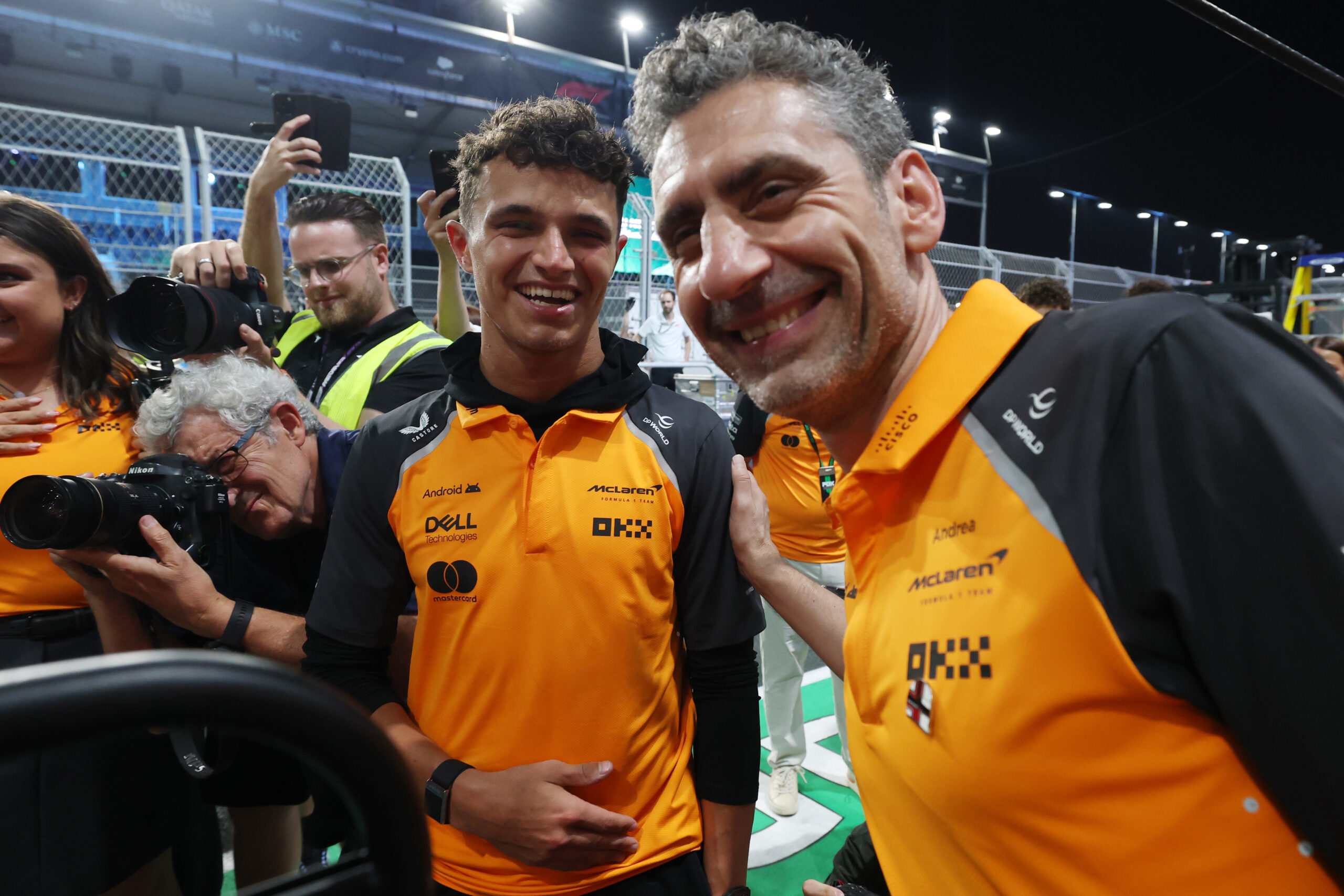Was McLaren right to intervene, swapping Lando Norris and Oscar Piastri’s positions following an unexpected slow stop for the British driver, or did the team cross a line at the Italian GP? In this opinion piece, Pit Debrief examines both sides of the argument.
Yes: Why McLaren’s intervention was justified
Strategy and fairness
McLaren made the correct decision to reverse the cars after Lando Norris’ slow pitstop. As the lead driver, Norris should have had priority on strategy. That is the way McLaren has always gone racing.
All season, the team has been clear about wanting to operate fairly. This has led to them developing a ‘two number one’ driver policy. Having two world-class drivers in a team is never easy to manage, but McLaren has consistently treated Norris and Piastri as equals.
Importance of the team
In this case, Norris should have been the first to pit. He was given the option but chose to stop second, protecting Piastri from pressure by Charles Leclerc. It was a team-first call, but one that came at personal cost. Norris was assured he wouldn’t be undercut, yet a slow stop dropped him behind. McLaren then faced a difficult decision: hold position and risk damaging trust or reverse the cars to keep their commitment to fairness.
With the constructors’ title effectively wrapped up, team harmony becomes even more important. Leaving the order unchanged could have undermined pit crew morale by making them feel responsible for affecting the outcome of a title fight. No one wants to be blamed for costing a driver the world championship. Reversing the cars avoided that.
A pattern of fair play
The error wasn’t Norris’ fault. Throughout the entire race, Lando Norris had been the faster of the McLarens. He had led the team from the start of the race. The only reason he was behind was because of the slow service.
This was a very similar situation to the 2024 Hungarian GP. Piastri had been leading the race when they pitted Norris first, giving him the undercut. They then asked him to let Piastri through, as their intentions had not been to undercut the other car. Norris reluctantly complied with the pit wall’s instructions, and Piastri went on to win the race. That moment set the expectation that McLaren would act to keep things fair. This time, Piastri returned the favour.
No chance lost for Piastri
Importantly, Piastri was still allowed to fight for the position. After the call had been made to swap positions, he was told that he was free to fight for the position. However, over the final four laps of the race, he was unable to catch Norris and finished just over two seconds behind.
With Norris’ increased speed, he may have been able to overtake Piastri on track if the team had not intervened. However, this could have caused unnecessary risks for the team. It also ensured that there was no chance of Leclerc attacking for P3.
In the end, McLaren’s call upheld their principles, avoided intra-team tension, and prevented outside threats from influencing the result. It was the only decision that made sense.
No: Why McLaren’s intervention was not justified
Traditionally, the leading car is given pitstop priority. But in this case, McLaren consulted Norris, who was running second. Norris suggested Piastri be given priority instead—perhaps motivated by the prospect of running on fresher rubber for the final stretch or gambling on a late-race safety car—on the condition that he wouldn’t be undercut. The team gave Norris their word, apparently failing to account for the fact that pitstop infallibility can never be fully guaranteed.
McLaren has opened Pandora’s box
Will Joseph to Norris: Lando, we will box this lap onto the soft tyre (…)
Norris: Do you want to box the other car first?
Joseph: Yep, we’ll do that. We’ll swap it around so stay out.
Norris: Well, only if he doesn’t undercut, otherwise I’ll box first.
Joseph: There will be no undercut.
It’s worth noting that there is no sense of urgency in the messages relayed between Norris and his race engineer in relation to Piastri being under threat from Leclerc. In fact, there is little discussion about this at all. Therefore, it’s difficult to state with certainty that concern for Piastri was Norris’ primary motivation for suggesting McLaren deviate from the traditional pit sequence.
Whether the Ferrari actually posed an imminent threat is debatable—particularly as Leclerc himself felt a podium finish was not within reach on this occasion—but such was the reasoning provided by Piastri’s race engineer.
McLaren called Piastri into the pits on Lap 45, mounting the softs; the stop was smooth and swift at 1.9 seconds. Norris, however, encountered issues when he was brought in on the following lap. Due to a problem with the front-left tyre, the stop ballooned to 5.9 seconds. Norris emerged third, trailing Piastri.
Though such unexpected occurrences are woven into the DNA of the sport itself, McLaren decided to intervene to reverse the order. After receiving the message, Piastri pointed out that the instruction seemed at odds with previously established team policy.
Inevitable comparisons
To justify the request, Piastri’s race engineer referenced the 2024 Hungarian GP where, as a result of a similarly self-imposed situation, Norris was instructed to switch positions with Piastri after an undercut handed him track position advantage over his teammate, who had been running first up to that point. Norris eventually complied, though the back-and-forth was drawn out.
In the aftermath, many argued the unnecessary and self-inflicted complication had soured the celebration around Piastri’s maiden F1 victory, sparking intense debate over what came to be known as McLaren’s in-house “Papaya Rules”. The key difference between 2024 and 2025 is that Norris and Piastri were not in direct competition for the Drivers’ title last July.
The catalyst for the drama in Monza was, again, McLaren’s flexible approach to pit priority. In hindsight, it would have probably been more prudent to simply stick with the traditional pit sequence.
The perils of precedent
Nevertheless, whatever his motivation, Norris made his choice. The slow stop was an unfortunate setback, but it was a product of chance, of racing “luck”. Piastri was simply in the right place, at the right time to capitalise on his championship rival’s misfortune.
If the underlying reality is that both drivers are now free to look after their own interests as the season finale draws closer, then the team owes it to both of them to make this explicit, rather than hiding behind the language of equal opportunity.
It’s unreasonable for Piastri to be asked to pay the price for a pitstop mishap, a stroke of bad luck, something he had no more control over than Norris himself. The optics of the intervention are even more unsavoury given that Piastri and Norris are direct rivals in the fight for the Drivers’ Championship.
The drama at Monza exposes how fragile McLaren’s fairness doctrine really is. In their desperate attempt to appear as impartial as possible, they are inviting accusations of heavy-handed tampering and favouritism. Where is the line drawn, exactly? Each intervention becomes a reference point for future disputes; fuel for emotional bargaining between drivers and team. This system of “owing” and “repaying” favours is unsustainable when the drivers are in a tight championship battle.
If McLaren truly wants to uphold fairness, it must accept that racing is governed by chance as much as it is dictated by strategy. Drivers will gain or lose because of variables outside anyone’s control. The fairest system is one that simply lets the chips fall where they may.





